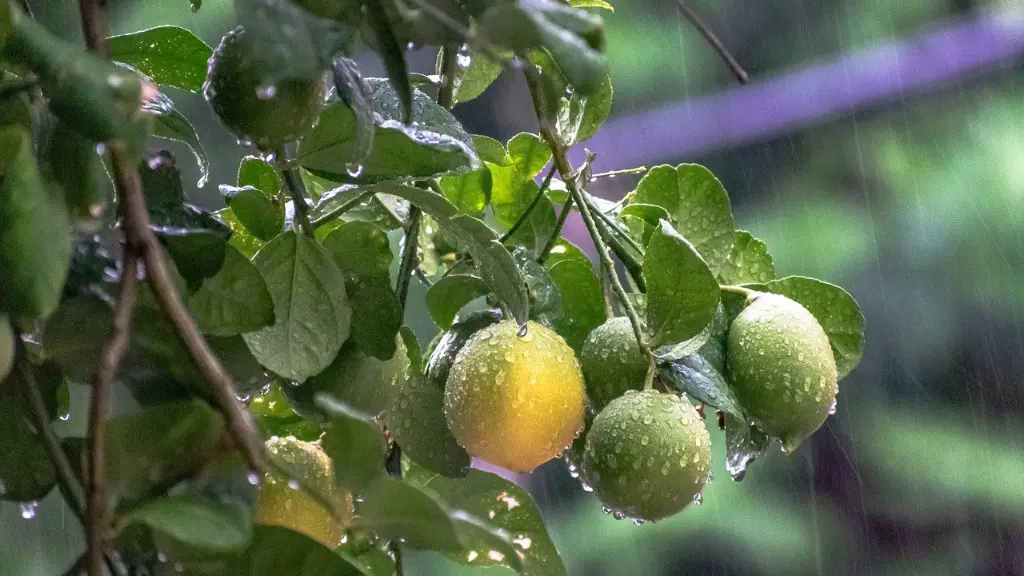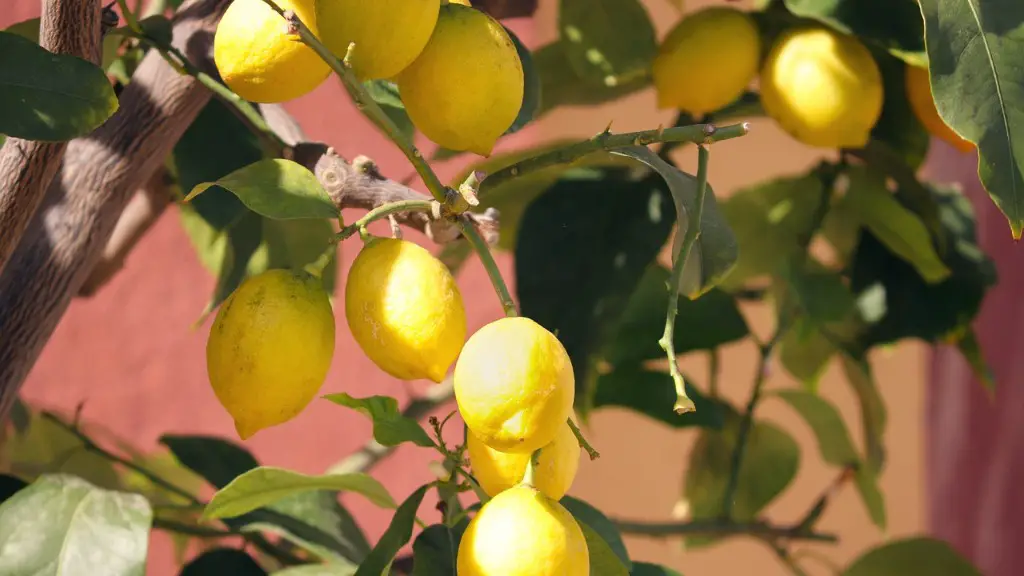Dwarf Meyer lemon trees are a popular choice for home gardens or urban patios. Pruning the tree is necessary for a successful harvest and for increasing fruit production. Knowing how and when to prune your tree correctly will help ensure you enjoy your citrus produce for many years to come.
To begin pruning your dwarf Meyer lemon tree, start by assessing the overall health and shape of the tree. Look for any visible signs of disease or damage that may have occurred, and prune those affected branches away. After the general pruning is completed, move onto selective pruning. This is where you remove damaged, dead, crossing, or rubbing branches and any unwanted growth.
The pruning of your citrus tree should be done when it’s actively growing, during spring and summer. For best results, avoid pruning when fruiting is underway. During the pruning process, use bare hand pruning shears, anvil pruners, hedge shears or loppers – depending on the size, to shape your tree. Prune in a way that will create the desired shape, making sure the main branches get enough sunlight and air for better flow.
You should also keep in mind that dwarf Meyer Lemon Trees don’t need much pruning, as their natural form is already quite attractive. When pruning, the desired shape should be airier and more open, which will provide ideal sunlight and ventilation, as well as help create the right environment for a larger harvest. Doing your pruning job carefully and with precise aiming points ensures a front-back-side balanced growth and prevents water stagnation due to debris gathering at the base.
To keep your tree from growing too aggressively, prune it regularly. On an annual basis, prune around 10-20 % of the growth, being sure to remove any dead or diseased branches. Never prune all the new stems off; be sure to leave enough so the plant can grow and produce healthy new fruit. Finally, always make sure your pruning shears are sharp, this will ensure you get the bestpruning job done and avoid any injury to the tree.
Pruning Technique
When pruning a dwarf Meyer Lemon tree, the technique you use is very important. The best way to prune your tree is with a combination of thinning, topping, and heading. Thinning involves removing any branches that overcrowd the tree and to open up the canopy. Topping is done by removing any upright branches that are growing too tall and heading is done by cutting back longer more drooping branches to encourage bushier growth.
In addition to the above techniques, you should never prune the branches too close to the trunk of the tree. The branches should leave a bit of stem which will help with the structural integrity of the tree. Pruning should always be done in such a way that it improves the air circulation and keeps the inner branches of the tree healthy.
Fruit Production
Pruning is an important part of improving the quantity and quality of the fruit produced from your dwarf Meyer lemon tree. Having open foliage and reduced foliage density will allow for more sunlight penetration and increased air circulation. This will help ensure the fruiting process is successful and will also help to reduce the chances of fungal diseases or rot occurring on the fruit.
Regular pruning of the branches that bear fruit will increase production. Pruning the branches encourages new shoots to grow and will give the tree the space it needs to produce more fruit. The technique used for fruit producing branches should be heading, where the ends of the shoots are pinched off, resulting in more fruiting growth.
Proper Watering
After pruning, proper watering is a must. Watering your tree will help promote healthy new growth and also help keep your tree free from disease. Over watering or underwatering can lead to poor growth or a lack of fruit production.
The best time to water your dwarf Meyer lemon tree is in the morning after the temperatures have risen. This lets the tree absorb the water before the sun gets too hot and dries out the branches. Aim the water at the base of the tree and avoid getting the foliage wet, otherwise you may experience problems with fungus or rot. A good rule of thumb is to water when the soil around the tree is dry, but still moist.
Fertilizing & Mulching
It’s important to provide fertilizer to your dwarf Meyer lemon tree to ensure it remains healthy and fruitful for many years. Fertilizing your tree regularly with a citrus-specific fertilizer or a general-purpose fertilizer is recommended. Applying fertilizer at the beginning of the season is the most beneficial way to keep your tree healthy and well-nourished. Make sure to follow the manufacturer’s instructions when applying and also spread a layer of organic mulch around the base of the tree to help preserve moisture in the soil.
Pest and Disease Control
Pest and disease control is an important part of caring for your dwarf Meyer lemon tree. Being aware of common pests and diseases, as well as their damage, will help you best care for your tree and prevent any future issues. Common pests and diseases to look out for include aphids, mealybugs, mites, caterpillars, scale, and root rot.
If you ever do encounter any of these pests or diseases, the best course of action is to act quickly, eliminating the pests or treating the affected areas. Neem oil, insecticidal soap, and natural predators are all viable options for controlling common pests. For diseases, prune away any infected areas and apply a fungicide or copper-based spray to help control the spread.
Tools and Safety
When pruning a dwarf Meyer lemon tree, it’s important to use the correct tools and wear the appropriate safety gear for the job. A good pair of pruning shears and a pair of gloves are recommended, as well as long pants and a long-sleeved shirt. Always keep your hands, arms, and face away from the sharp edges. Remember to always prune with caution and never leave any sharp edges exposed.


